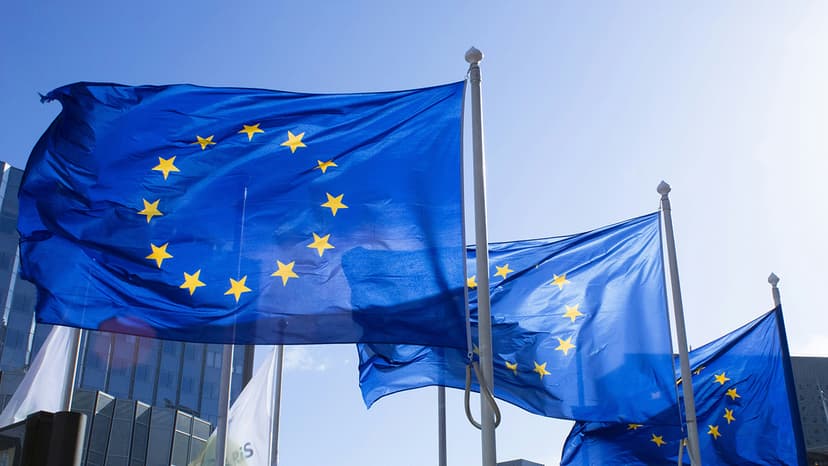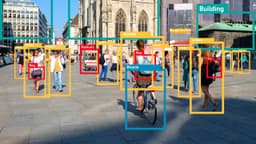AI Detector is Detecting my Work as 100% AI Generated Due to Ignorant Use as an Editing and Grammar Tool
In today's fast-paced digital world, we rely heavily on technology to assist us in various aspects of our lives. One such technology is Artificial Intelligence (AI), which has made significant advancements in recent years. However, these advancements come with their own set of challenges, as I learned through a disconcerting experience using an AI detector as an editing and grammar tool. This article provides an in-depth exploration of that experience, emphasizing the need to recognize AI's limitations and the irreplaceable value of human insight.
The Concept of AI and its Uses Expanded
AI is not merely a technological phenomenon but a transformative force reshaping how we live, work, and communicate. At its core, AI involves creating computer systems capable of performing tasks that traditionally require human intelligence. These tasks encompass a wide array of capabilities, such as visual perception, which allows machines to interpret and understand images and videos; speech recognition, enabling them to comprehend and respond to spoken language; decision-making, where AI can make choices based on data analysis; and natural language processing, which allows for the understanding and generation of human language.
AI's applications are as diverse as its capabilities. In healthcare, AI aids in diagnosing diseases, predicting patient outcomes, and personalizing treatment plans. In finance, it's used for algorithmic trading, fraud detection, and customer service automation. The creative fields have also embraced AI, using it for everything from generating new music and artworks to assisting writers in overcoming creative blocks. My personal journey with AI began with the intention to leverage its capabilities as an editing and grammar tool, aiming to refine and enhance my academic work with what I believed was cutting-edge technology.
AI Detector: A Double-Edged Sword Expanded
On the recommendation of my academic advisor, I turned to an AI detector, a tool designed to scrutinize written work and identify any segments that might have been generated by an AI. The rationale behind this tool is compelling: in an era where AI-generated content can be nearly indistinguishable from human-written text, maintaining the integrity of academic and creative works is more important than ever. The detector I used promised to safeguard this integrity by analyzing the text for patterns and markers typical of AI-generated content, ostensibly helping to combat plagiarism and ensure the authenticity of the work being submitted.
Filled with a sense of confidence and innovation, I submitted my carefully crafted piece to the AI detector. The tool's design seemed impeccable, with algorithms tailored to pick up on the subtlest hints of AI authorship. This capability is crucial in academic environments where the originality of ideas and the authenticity of work are paramount. The ability to discern between human and machine-generated content is not just a technical challenge but an ethical imperative, ensuring that students and academics are rightfully credited for their intellectual efforts and that the academic discourse remains genuinely human.
However, this technological marvel turned out to be a double-edged sword. The very sophistication that made the AI detector seem infallible led to an unexpected and unsettling outcome. My text, into which I had poured genuine thought and personal insight, was flagged entirely as the product of AI. This result was not only shocking but deeply concerning, highlighting a critical flaw in the system's design: its inability to differentiate between text refined by AI tools and text originally generated by them. This flaw exposed a significant gap in the technology's understanding of human nuance and creativity, leading to a paradox where using AI for enhancement ironically resulted in the denunciation of the human element it was meant to serve.
Expanded Unforeseen Consequences
The results from the AI detector were not just unexpected; they were profoundly unsettling. Here was a piece I had devoted considerable time and effort to, embedding my personal insights, experiences, and the very essence of my intellectual curiosity into every paragraph. I had interacted with the text at a deeply personal level, revising and refining it to ensure it accurately reflected my understanding and perspective. Yet, when I submitted my work to what I believed was a sophisticated AI detection tool, the feedback was disheartening. The detector, relying on its algorithms, declared my work entirely AI-generated.
This stark misjudgment by the AI detector brought to light a significant and troubling issue: the inability of current technology to discern the nuanced differences between human-enhanced and AI-generated text. The algorithms, designed to identify patterns typical of AI writing, couldn't recognize the elements that unmistakably marked my work as human: the subtle variations in style, the complex thought processes, and the unique personal touch that can't be replicated by machines. This misclassification wasn't just a technical error; it was a misrepresentation of my intellectual property and a stark dismissal of my creative effort.
Expanded Lessons Learned
This eye-opening encounter with the AI detector taught me several invaluable lessons about the burgeoning world of artificial intelligence. First and foremost, it revealed the limitations of AI in understanding and evaluating human creativity. Despite the leaps and bounds in technology, AI still lacks the ability to fully comprehend the depth and breadth of human thought and expression. It operates within the confines of its programming, unable to appreciate the subtleties that define genuinely creative work.
Moreover, this experience highlighted the critical importance of human intervention in the AI-assisted processes. While AI tools can significantly aid in various tasks, they should not be seen as infallible or as stand-alone solutions. Instead, they should be viewed as what they are: tools that need human oversight and input to function effectively. This incident served as a reminder that, in the realm of creativity and original thought, human judgment is irreplaceable. It's a call to approach AI with a balanced perspective, recognizing its potential to assist but also its limitations.
Expanded Value of Human Touch
The incident with the AI detector underscored the indispensable value of the human touch in creative endeavors. AI, with all its efficiency and capabilities, lacks a fundamental understanding of human emotions, experiences, and the nuanced perspectives that come with them. While it can mimic patterns of human writing and even generate coherent and seemingly creative pieces, it cannot replicate the depth of feeling, the personal anecdotes, or the unique worldview that a human brings to their work.
The human touch is what makes content not just informative but also engaging and relatable. It's the difference between a story that simply tells and one that resonates, between text that informs and prose that inspires. This distinction is crucial, especially in creative fields where authenticity and emotional connection are key. The incident served as a powerful reminder that while AI can augment our abilities, the elements that truly make our work resonate—the emotions, personal experiences, and the unique perspectives—are irreplaceably human. As we move forward in the age of AI, acknowledging and preserving this human touch is not just valuable; it's essential.
Moving Forward
To avoid such misinterpretations in the future, it is vital to educate ourselves about the strengths and weaknesses of AI technologies. AI detectors, for instance, could be enhanced by incorporating more sophisticated algorithms that consider context, tone, and other human-specific indicators. Furthermore, individuals using AI tools should proceed with caution and always review the final output, ensuring it remains true to their intent.
My encounter with the AI detector taught me a valuable lesson about the need to strike a balance between relying on technology and preserving the essence of human creativity. As we progress further into the age of AI, it becomes even more crucial to approach these tools as complementary rather than replacements, appreciating the distinctive qualities that make us who we are.












